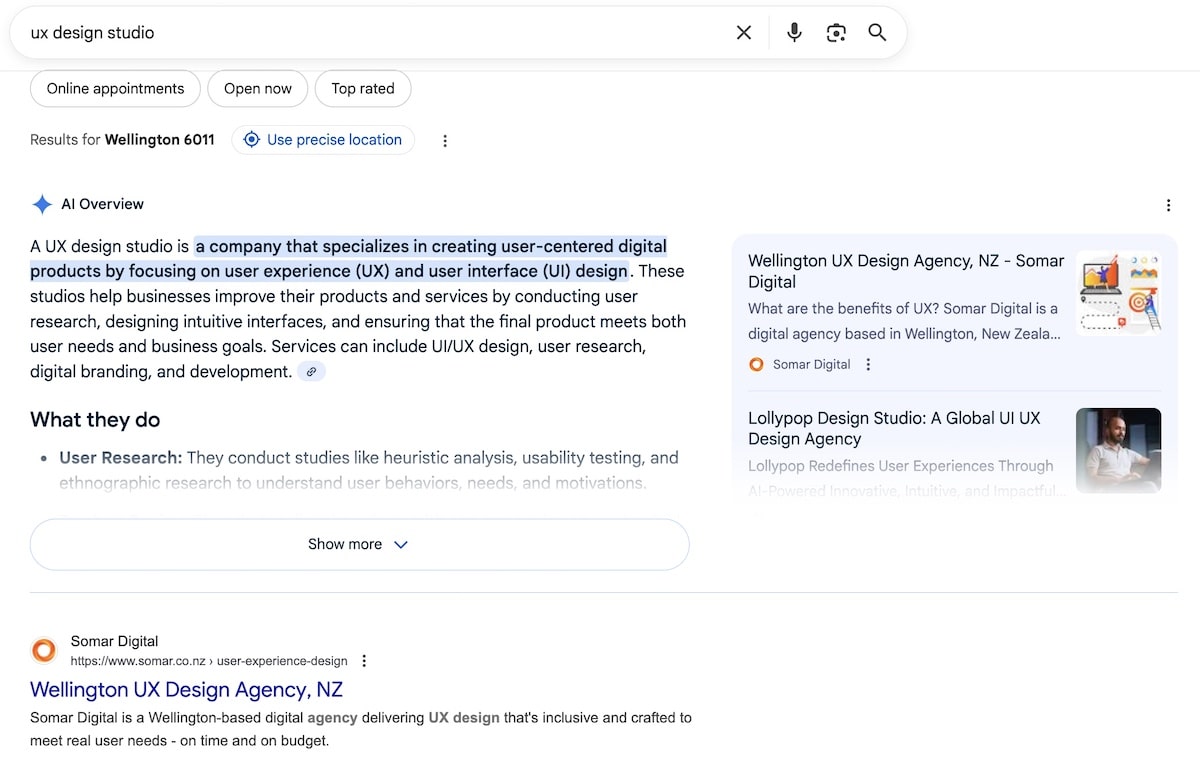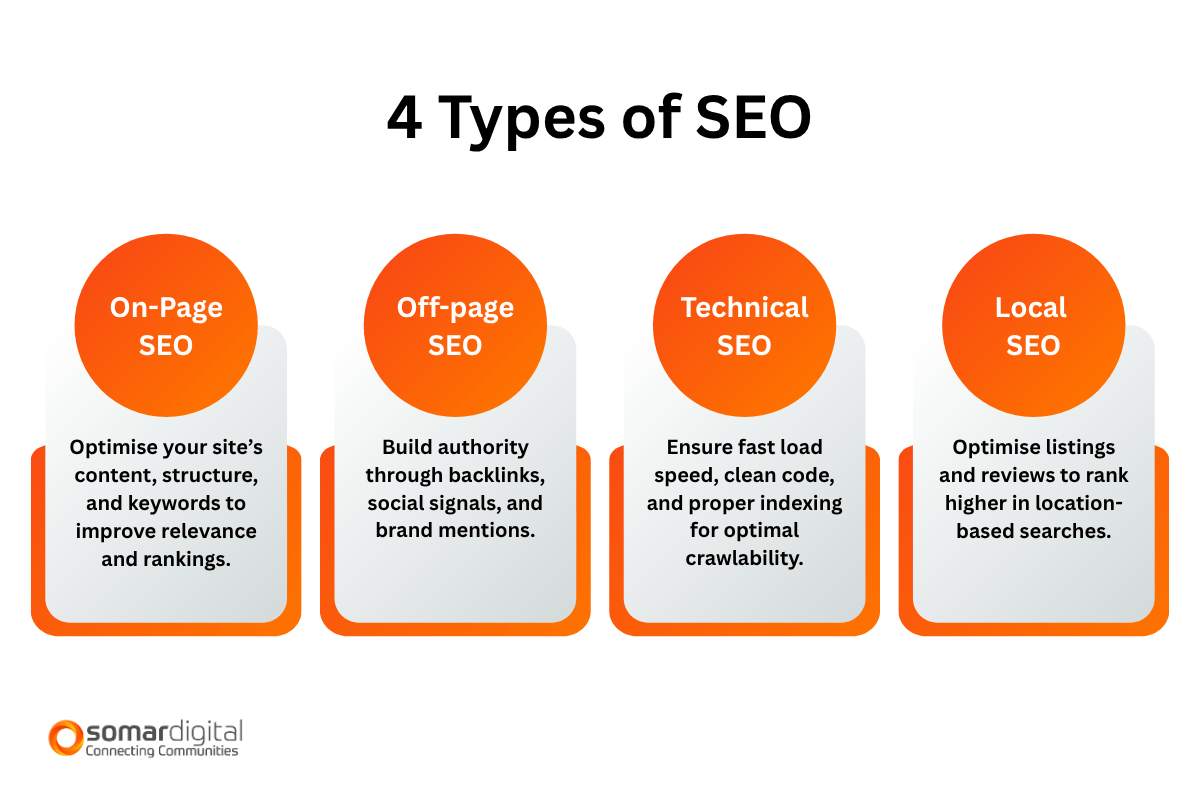Search engine optimisation is a digital marketing strategy to reach an audience organically.
Key Takeaways
- SEO is a practice of optimising a website to improve ranking and grow organically.
- There are four primary types of SEO: on-page SEO, off-page SEO, technical SEO, and local SEO.
- Consistency is the key to reaching the audience organically on search engines and AI agents.
What is SEO and Why It Matters?
SEO is one of the digital marketing strategies that helps people rank their business or organisation's website on search engines. SEO stands for Search Engine Optimisation. In SEO, you optimise different aspects of your website so that search engines can crawl and index your website, and rank your web pages higher in search engine results.
For example, when you search "ux design studio", you will see Somar Digital ranking on top, that's because of search engine optimisation. Similarly, your website can start showing up in SERPs (Search Engine Results Page) for keywords or search terms that are important or relevant to your organisation or business.

The 4 Types of SEO
On-Page SEO (On-Site SEO)
On-Page SEO, also known as On-site SEO is a process of optimising a web page, its source code, and content to rank better and higher in search engines. On-page SEO includes anything you do on your website, using relevant keywords, updating content, writing blogs & web pages, adding relevant images, optimising images, and more.
Off-page SEO
Off-page SEO is exactly how it sounds: you work outside your website. Your main goal with off-page SEO is to get high-quality backlinks, have a better, consistent presence across social media and local directory listings, and engage with your audience online, etc. One of the main purposes of off-page SEO is to build reputation and authority.

Technical SEO
In technical SEO, you optimise different technical aspects of your website. Technical SEO strategies include optimising website code, improving page load speed, fixing error codes, fixing redirects, canonicalisation, and more.
Local SEO
Local SEO is the practice of optimising to rank higher locally. With local SEO, businesses can rank in local search queries. With local SEO, you can target suburbs, city, region, or even country. For instance, when a user searches "hairdresser in Wellington", you will see various search results for it. With local SEO, your goal is to be one of the first businesses users find.
How SEO Drives Growth
- Increases visibility - With SEO, your website ranks higher, which in turn enhances website visibility.
- E-E-A-T signals - E-E-A-T (Experience, Expertise, Authoritativeness, Trustworthiness) signals guide Google, AI agents, and AI copilots about high-quality, reliable content. Strong EEAT signals demonstrate consistency, credibility, and accuracy to users and search engines.
- Traffic based on user intent - You can attract visitors to your website by offering need-based content for users. There are four types of intent, namely, informational, navigational, commercial, and transactional.
- Increased lead generation - Based on your content and user intent, you can increase prospects of bringing qualified clients, donors, patrons, and customers to your website.
- Improve user experience - With a user-friendly and responsive website, you provide more value to your users, which in turn signals quality to search engines.

Impact of AI on SEO and Search
AI is reshaping SEO and search by making search engines smarter, and search results are now more personalised. It is also changing how people search; now, search is becoming more semantic-focused than keyword or search-term-focused. Organisations and businesses need to maintain consistent brand visibility across multiple platforms.




